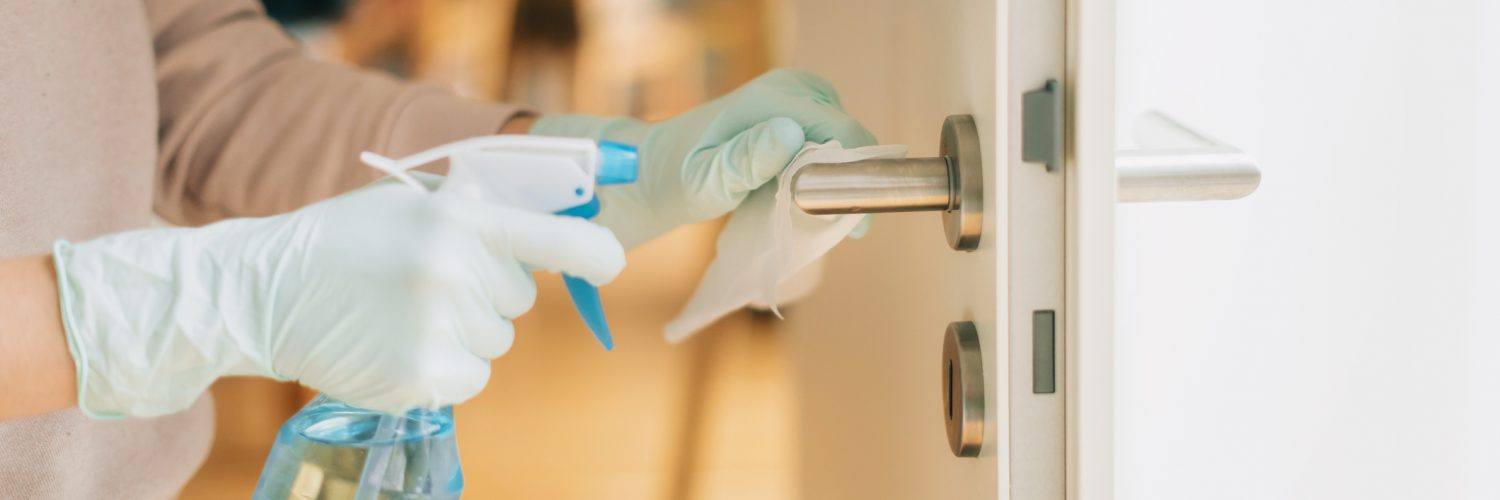As many people are spending more time at home, the clutter, dust bunnies and fingerprints on the windows that can normally be ignored may be more obvious and bothersome than in normal times. And in the current environment, cleaning has understandably risen quite a few spots up on the priority list. While it may be tough to find time for a massive spring cleaning at the moment, tackling a few problem areas around the house can positively impact both your physical and mental health. Here are five steps to help you reap the benefits of a cleaner, healthier home.
- Clear the air. Whether you have asthma, allergies, or any kind of respiratory concern, dust and other types of particles can trigger these and related issues. Tackling dust and dander is a marathon, not a sprint, but reducing the amount in your home can be achieved through regular cleanings requiring a minimal amount of time each week. Dust surfaces first before vacuuming to ensure you pick up any particles that float to the ground while cleaning. Depending on your family’s sensitivities, an air purifier may also help capture any remaining dust or dander hanging out in the air. It also helps to remove your shoes when you come home to avoid tracking extra dirt inside.
- Get active. Making cleaning a regular part of your routine means you’re on the move! Pushing a vacuum or mop around, moving clutter to the curb, and scrubbing the nooks and crannies around your house all count as exercise. Think of the time you spend cleaning as an investment in the health of both you and your home. (And while fantastic inventions, no, turning on the robot vacuum does not count.)
- Relieve stress. A cluttered home can create feelings of stress and anxiety for many people. Clearing out the excess stuff to reveal a more open, airy home can improve your mood and your outlook, especially during this challenging time. If it feels overwhelming to take on your entire home at once, start small. Put an empty box somewhere out of the way, and each day add one item you no longer need or want – maybe a coffee mug you haven’t used in years or a duplicate vase. Once the box is full, sort it out into trash or donate piles, and enjoy the positive outlook of a fresher, decluttered home. Here are a few more tips to help you get started. Another benefit to decluttering? Less stuff on the floor, which can reduce your chance of injury by tripping on loose rugs, piles of shoes or an errant toy.
- Detoxify your routine. Similar to dust and dander, harsh chemicals can irritate people with respiratory conditions. There are effective alternatives to standard cleaning formulas that you can safely and inexpensively make at home. Cleaning with these types of ingredients is a great first step in the disinfecting process.
- Disinfect to stay safe. While natural and homemade cleaners can be effective, it is also important to follow current CDC guidelines to clean and disinfect your home, especially if someone is or has been ill. Using approved or recommended disinfectants ensures any germs remaining after you cleaned are killed. This includes washing bedding and other linens regularly in hot water and disinfecting commonly touched surfaces, including door knobs, light switches and television remotes. If you do incorporate bleach or other similar cleaners into your routine, ensure you take proper precautions including ventilating the space to avoid issues.
While spring is often the season of cleaning, it can feel overwhelming to tackle your entire to-list at once. Breaking down your cleaning goals into manageable chunks can help you develop a long-lasting, sustainable routine to ensure a healthy home and a healthy you.



